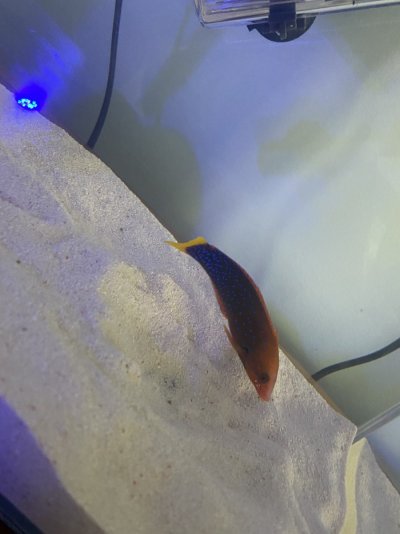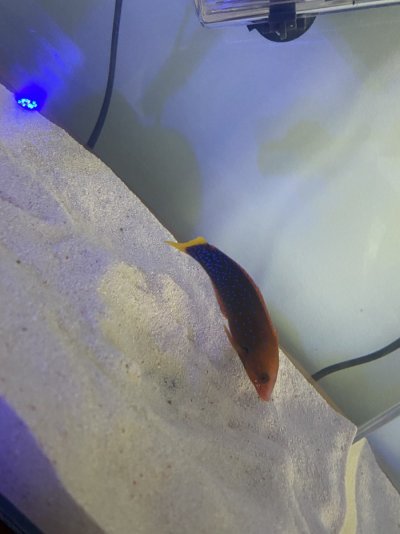Hey Everyone,
Purchased this guy from the LFS but not sure what kind of Wrasse he is or best care practice. I've attached pics below.
If anyone could ID this guy and recommend a specific QT procedure they have successfully used on this kind of wrasse previously as well as any general diet or care tips that would be greatly appreciated
I currently have him sitting in his own QT tank with sand (He loves burying himself - to the point where I feel like i need to disturb him at feeding time) with a large HOB filter with media and filter wool. I am feeding Mysis and Brine shrimp which he has shown some interest in. I have access to praziquantel tablets, triple sulfa and copper, but I am aware copper Isnt really appropriate for wrasses
Any tips appreciated!
Cheers


Purchased this guy from the LFS but not sure what kind of Wrasse he is or best care practice. I've attached pics below.
If anyone could ID this guy and recommend a specific QT procedure they have successfully used on this kind of wrasse previously as well as any general diet or care tips that would be greatly appreciated
I currently have him sitting in his own QT tank with sand (He loves burying himself - to the point where I feel like i need to disturb him at feeding time) with a large HOB filter with media and filter wool. I am feeding Mysis and Brine shrimp which he has shown some interest in. I have access to praziquantel tablets, triple sulfa and copper, but I am aware copper Isnt really appropriate for wrasses
Any tips appreciated!
Cheers




















